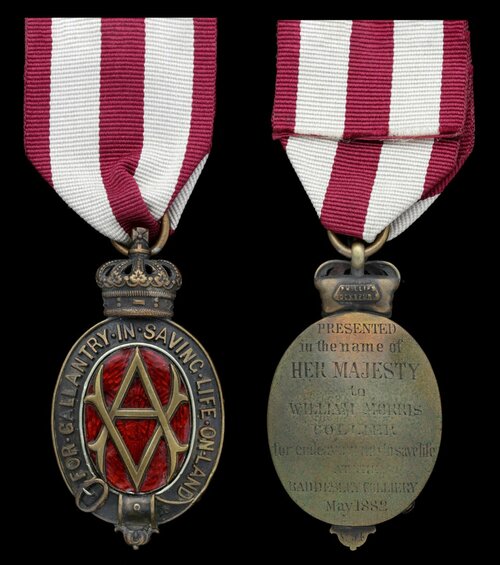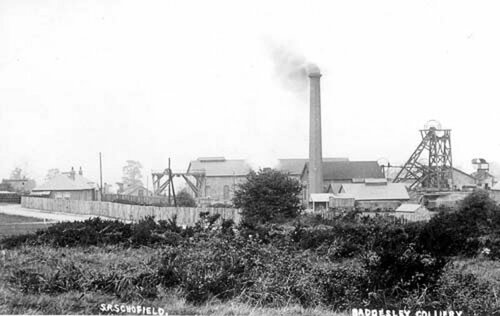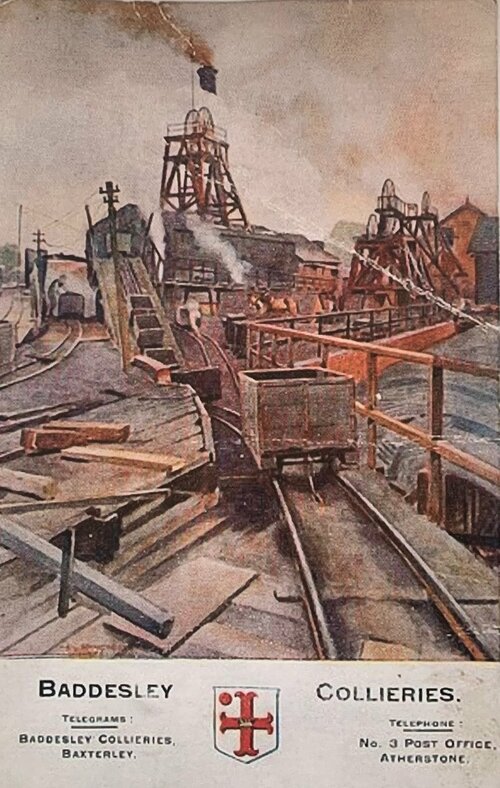Auction: 21001 - Orders, Decorations and Medals (conducted behind closed doors)
Lot: 374
'I do not believe that any brave soldier, whoever had the Victoria Cross presented to him, had performed an action more gallant than any of these heroes.'
Lord Leigh, Lord-Lieutenant of the County of Warwick, at the investitureAn Albert Medal Second Class for Land awarded to Collier W. Morris, Colliery Manager, for his gallantry following the Bassesley Pit Explosion in May 1882 - when 23 of a rescue party were killed, Morris, with five others, descended the mine and succeeded in rescuing the owner and two others who were so badly burnt that they died shortly afterwards
Albert Medal, 2nd Class, for Gallantry in Saving Life on Land, bronze and enamel, the reverse officially engraved ‘Presented in the name of Her Majesty to William Morris Collier for endeavouring to save life at the Baddesley Colliery May 1882’, reverse of the crown with maker’s cartouché for Phillips, Cockspur St., and officially numbered ‘No. 54’, reverse a little worn, nearly very fine, the obverse much better
A.M. London Gazette 12 January 1883 (in a joint citation upon the award of 4 First Class awards and 6 Second Class awards for the action):
'For conspicuous gallantry displayed on the occasion of the Fire and Explosion at the Baddesley Colliery in May last.'
William Morris was born in 1853 at Baxterley, Warwickshire, the youngest of five children and went down his local pits from a young age. By 1882, he had spent time at the pit at Baddesley. The mine belonged to the Dugdale family and had first been sunk in 1850. By the time of the disaster, it was made up of two shafts, by 7ft wide and some 840ft deep, with a pumping pit. The Northern Mine Research Society take up the story:
On the morning of 1st May, Mr. Day, one of the deputies going to work descended the upcast shaft and met his father, Charles, at the bottom. He told his father that there was smoke in the shaft and he did not know where it was coming from. Charles Day immediately went up the shaft to see for himself and found a lot of smoke and had great difficulty in the shaft with noxious fumes and a considerable quantity of smoke which left him exhausted when he reached the surface.
Day sent for George Parker the manager and asked him to follow him into the mine when he arrived. Day went into the workings but he could not get down the incline because of the large amounts of smoke which was so dense that he could go only a few yards. Parker with some other men had descended and arrived just as Day was coming back. They made several attempts to penetrate the smoke but found that this was impossible.
Matters were now so serious that the owner Mr. Dugdale and the agent Mr. Podmore were sent for and it was decided that the assistance be sought of Mr. Smallman a mining engineer who lived quite close to the colliery. Smallman, after making himself familiar with the underground layout of the colliery, devised schemes to drive the smoke from the mine and hoped that they would be able to get into the first communication between the intake and the return and reach the seat of the fire. All efforts were driven back by the smoke and fumes and several men were overcome. Fresh volunteers were called for and they also met with no success. This was the final effort to reach the nine men who were known to be in the workings.
The call for volunteers was readily answered and at the request of Mr. Smallman and Mr. Pogmore and his son, were amongst them and many of the workmen. Very soon after Mr. Dugdale descended although he did not anything about mine procedures but thought that his presence would aid the confidence of the men and lead them to greater efforts to save their fellow workmen. He went down the shaft and reached the place where the explorers were at work. The new arrivals brought fresh materials with them and Mr. Smallman started to put his plans to recover the mine into operation. They started about 6 p.m. and worked until 8.30 a.m. when the air suddenly became motionless. There was a loud report like a roar of thunder and flames which burnt Messrs. Dugdale, Podmore and son, Parker and others and killed twenty-three men. Of the 18 men in the advance party, only one survived and he made his way to the shaft and ascended with others who were injured and went to the engine house.
Mr. Evans received a telegram at his house but he was away from home and Mr. Stokes his assistant was sent for and did not get to the colliery until 9 a.m. where he found Smallman lying very badly burnt in the engine house. He did not recognise him until he spoke. He told the Assistant Inspector what had happened and that there were men in the mine but it would be dangerous to go in as there might be another explosion any time.
Without hesitation Mr. Stokes asked for volunteers and accompanied by Mr. Spruce, a mining engineer of great experience, and Messrs. Marsh, Mottram, Charles Day and William Morris went down the pit and groped their way in the dark along the level of the engine plane which they found filled with noxious fumes and smoke from roof to a small distance from the floor. On hearing a voice they rushed into the smoke and brought out Mr. Dugdale who was in a very weak state. They wrapped him in blankets and brought him to the surface.'
Morris, having greatly assisted in the rescue of Dugdale, then returned to the depths, with Pickering and Chetwynd, helped drag Rowland Till to the surface with a rope, but his life could not be saved. As the smoke eminating confirmed that the fire still raged beneath, it was decided that no further lives would be saved and the shafts were sealed to extinguish them.
Morris and his comrades were invested with their richly deserved Albert Medals at the Corn Exchange, Atherstone on 19 February 1883 by Lord Leigh, Lord-Lieutenant of the County of Warwick. He would also have been presented with a Presentation Bible, paid for by the Relief Fund, which were distributed to those who participated in the rescue and also those families whose husbands, fathers and sons had perished. Morris married in 1892 and moved to Coalville, Leicestershire, continuing as a miner. He died on 11 December 1933; sold together with original programme, with detailed description of events, for the Investiture, another pamphlet which relates to the events, besides a quantity of copied research.
Subject to 20% VAT on Buyer’s Premium. For more information please view Terms and Conditions for Buyers.
Sold for
£5,200
Starting price
£3800











